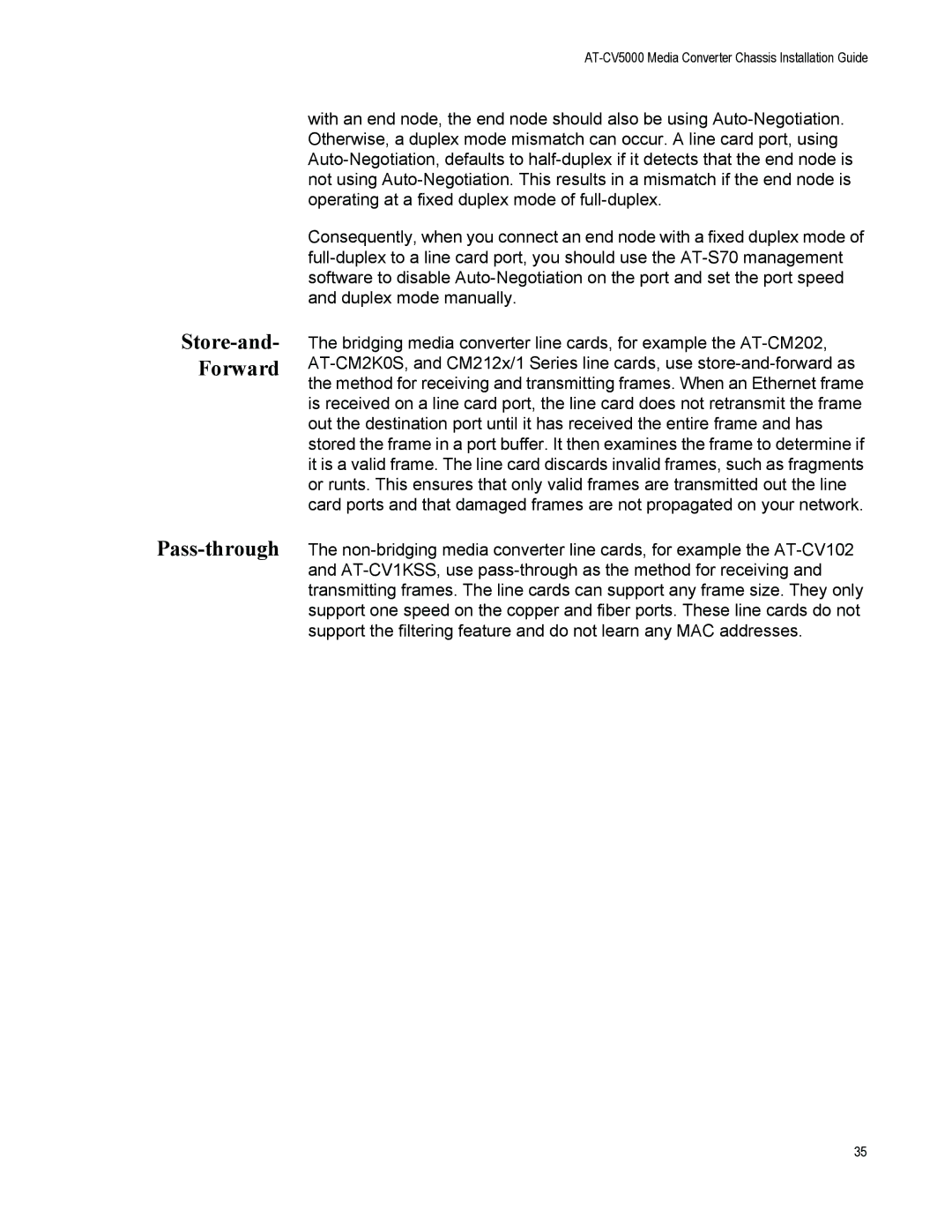AT-CV5000 Media Converter Chassis Installation Guide
with an end node, the end node should also be using Auto-Negotiation. Otherwise, a duplex mode mismatch can occur. A line card port, using Auto-Negotiation, defaults to half-duplex if it detects that the end node is not using Auto-Negotiation. This results in a mismatch if the end node is operating at a fixed duplex mode of full-duplex.
Consequently, when you connect an end node with a fixed duplex mode of full-duplex to a line card port, you should use the AT-S70 management software to disable Auto-Negotiation on the port and set the port speed and duplex mode manually.
The bridging media converter line cards, for example the AT-CM202, AT-CM2K0S, and CM212x/1 Series line cards, use store-and-forward as the method for receiving and transmitting frames. When an Ethernet frame is received on a line card port, the line card does not retransmit the frame out the destination port until it has received the entire frame and has stored the frame in a port buffer. It then examines the frame to determine if it is a valid frame. The line card discards invalid frames, such as fragments or runts. This ensures that only valid frames are transmitted out the line card ports and that damaged frames are not propagated on your network.
The non-bridging media converter line cards, for example the AT-CV102 and AT-CV1KSS, use pass-through as the method for receiving and transmitting frames. The line cards can support any frame size. They only support one speed on the copper and fiber ports. These line cards do not support the filtering feature and do not learn any MAC addresses.
